Trapunto and Italian Cording
This Friday, the Bluegrass Regency Society will be participating in an event at Ashland, the home of Henry Clay. The event is put on by the Costume Society of America. I am not a member (and neither are the others in the BGRS), but we have been invited to participate. I am extremely excited, and not a little nervous. I mean...these people are the real thing! Actors, professors, professional costumers, art and historical preservationists, etc, etc....all very academic types.
When I say we've been asked to participate, I don't mean standing up to make a speech or anything like that. (Thank goodness, because if that were the case, I would pack up and run for the hills!) We basically just have to get all dolled up in our 1790's attire, and look pretty. We are glorified eye-candy strolling the grounds of the estate. But, we are also supposed to be doing a little something that is specific to what our group's interests are, in order to have something fascinating to talk about when approached by all of these uber-intelligentsia. For example, we might demonstrate a certain kind of stitch, or seam construction technique of the time, or fan games, or jewelry making, or, or, or.
I mentioned in my last post that I have a little something in the works. And without spilling the beans yet, I will just say that I'm going to be quilting (hand quilting) part of it. I wanted to make sure the quilting I will be doing is accurate to the time period of the garment (mid to late 18th century.) So, I've been researching Trapunto and Italian Cording. You can see both modern and historic examples of these methods here (cording), here, (trapunto), and here, (both)
Trapunto and cording seems to have originated in Italy some time during the 16th century. It was heavily used in European fashion during the next couple hundred years. You can see examples of 18th century petticoats and jackets completely covered in the stuff on the Tiden's Toj site, Here, Here, and Here. It would seem though, that during the Regency era, Trapunto wasn't as heavily used as it was during the previous generation. But it didn't all together disappear. You can see a lovely green Regency era spencer here (scroll down about 6 or 7 images). The whitework quilt I posted in the previous paragraph is also from around 1800. And don't forget the stays/corsets that were fully corded during the regency era.
Trapunto and Cording came back into high fashion for a while during the 1820's, but then died down again in the 1830's. It's gone in and out of high fashion ever since then, but never fully left our households. Think of all of the whiteworked quilts and pillows people have in their homes today. (A very special thanks to Dawn Luckham and Suzi Clarke for their invaluable expertise, wisdom, and for helping me find some of these resources. I certainly didn't do it all on my own.)
Front, design outlined.
Back, design outlined.
Trapunto is a fascinating technique to say the least. Basically, you baste a thin piece of muslin to the back of your fashion fabric, and then use a running stitch to outline the design you are making.
I used 100% raw, top wool yarn for the stuffing and cording.
Stuffing the "pouch".
Stitched up, after stuffing.
On the back, you work a small hole into the individual "pouches" of the design, and carefully stuff with bits of wool. After this, you sew up the hole, and you are done.
Yarn pulled through the channels.
Cording starts out the same, but instead of stuffing a "pouch" with wool, you pull a piece of yarn/string/cord through the channel.
Front, finished Trapunto and Cording. Imagine an entire garment covered in this.
The result is a puffed up design on the front of your fashion fabric. When finished with all of the Trapunto and Cording, you back your fashion fabric with cotton or wool batting, do more regular quilting if you like, then construct your seams and line it.
All that being said... I've been practicing this method, because this is my social-instigating-"drug" of choice for this Friday's event (in other words, this is what I will be demonstrating.) Wish me luck. I'm almost certain to say or do something stupid.
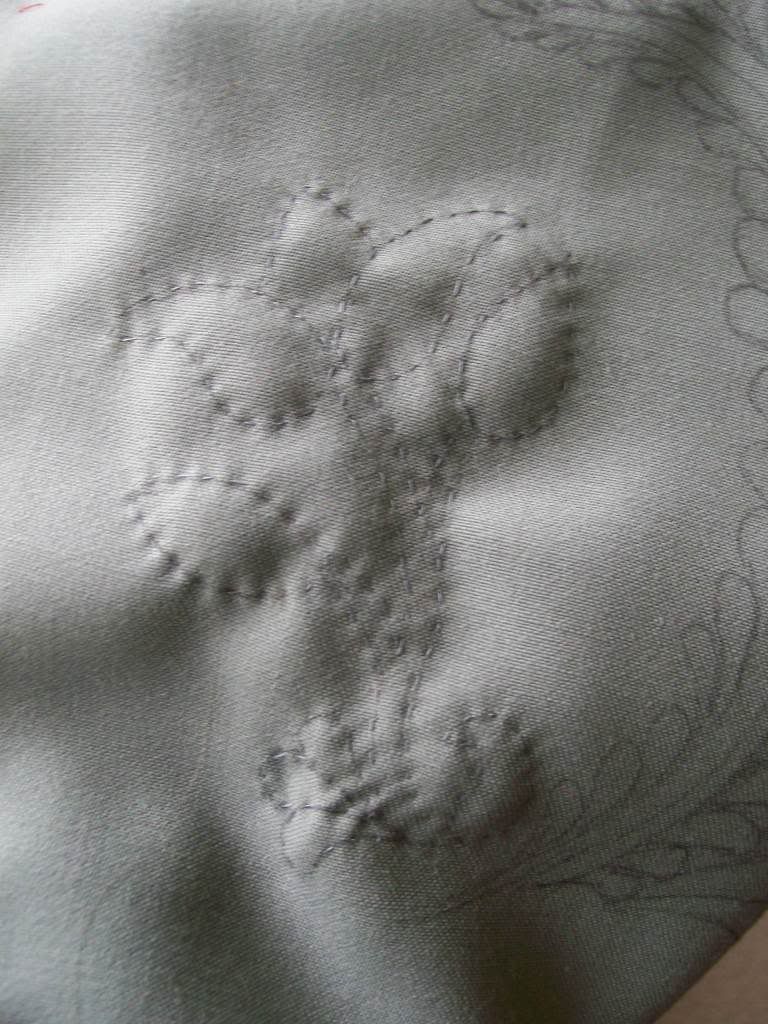

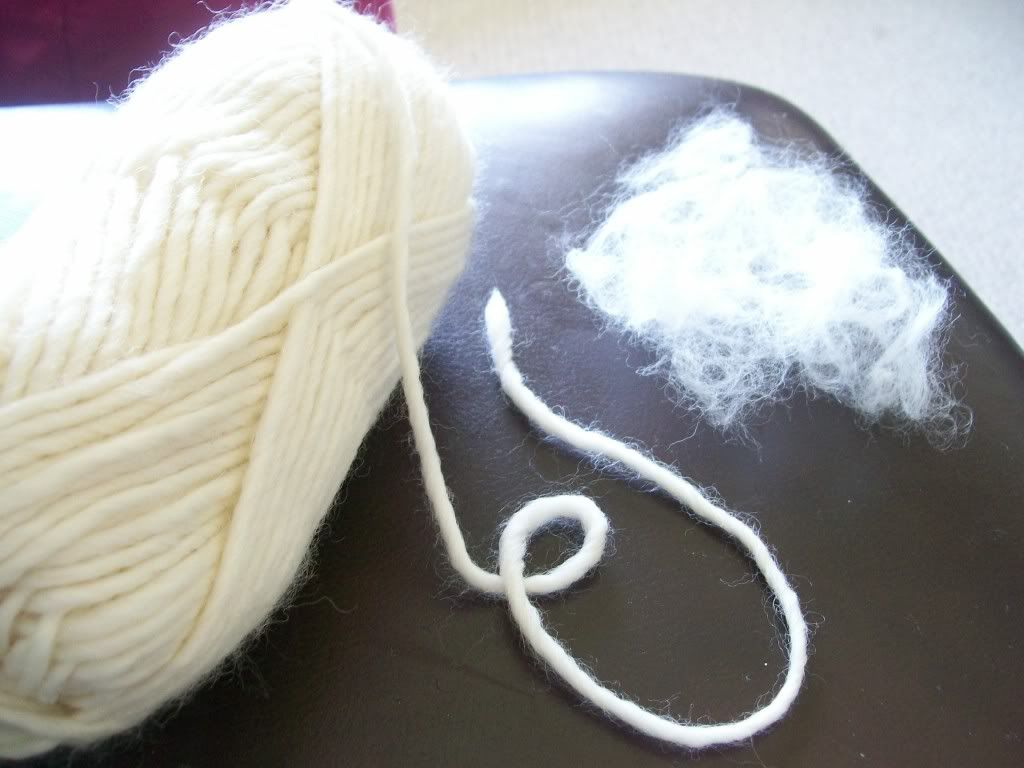
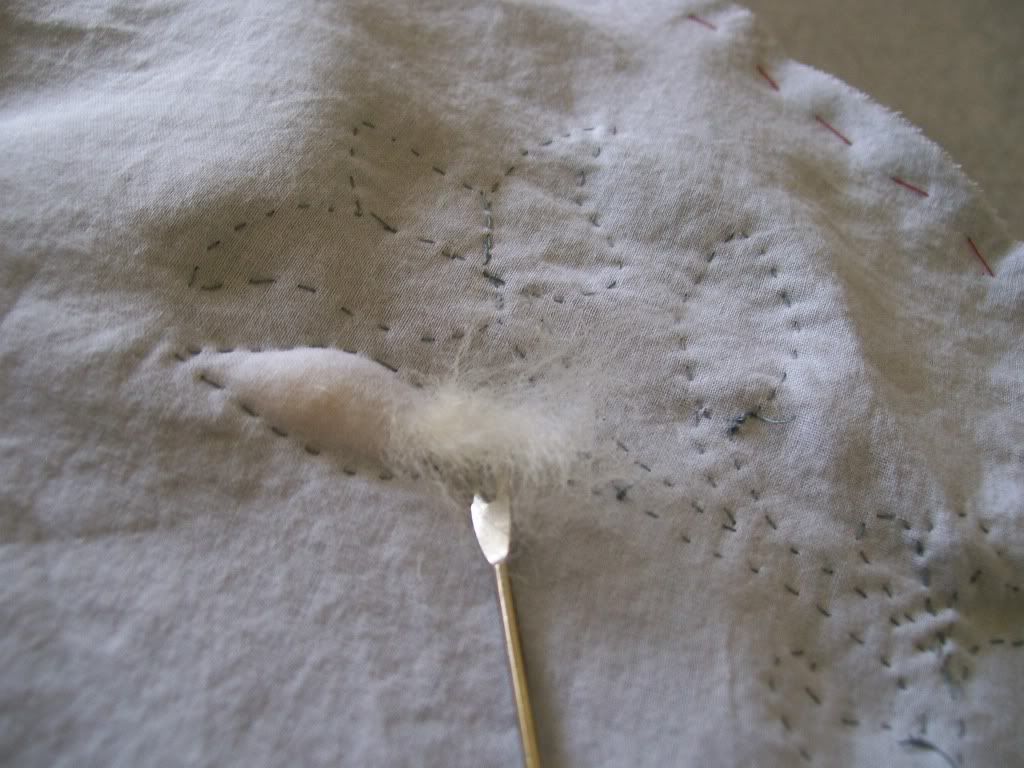
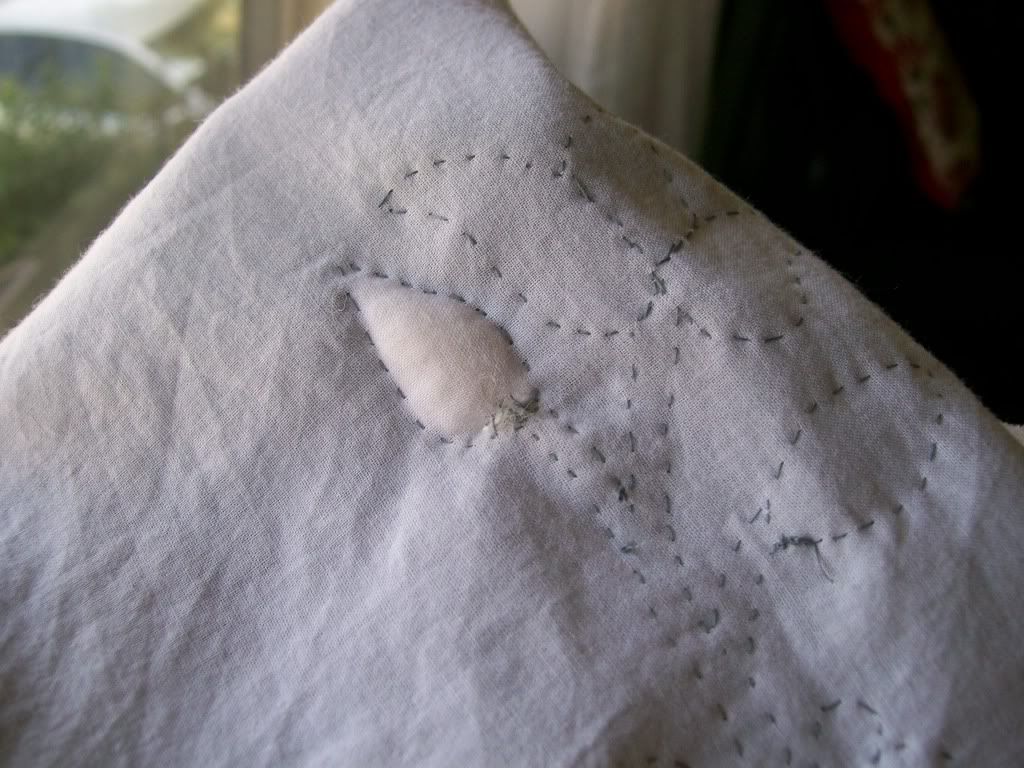
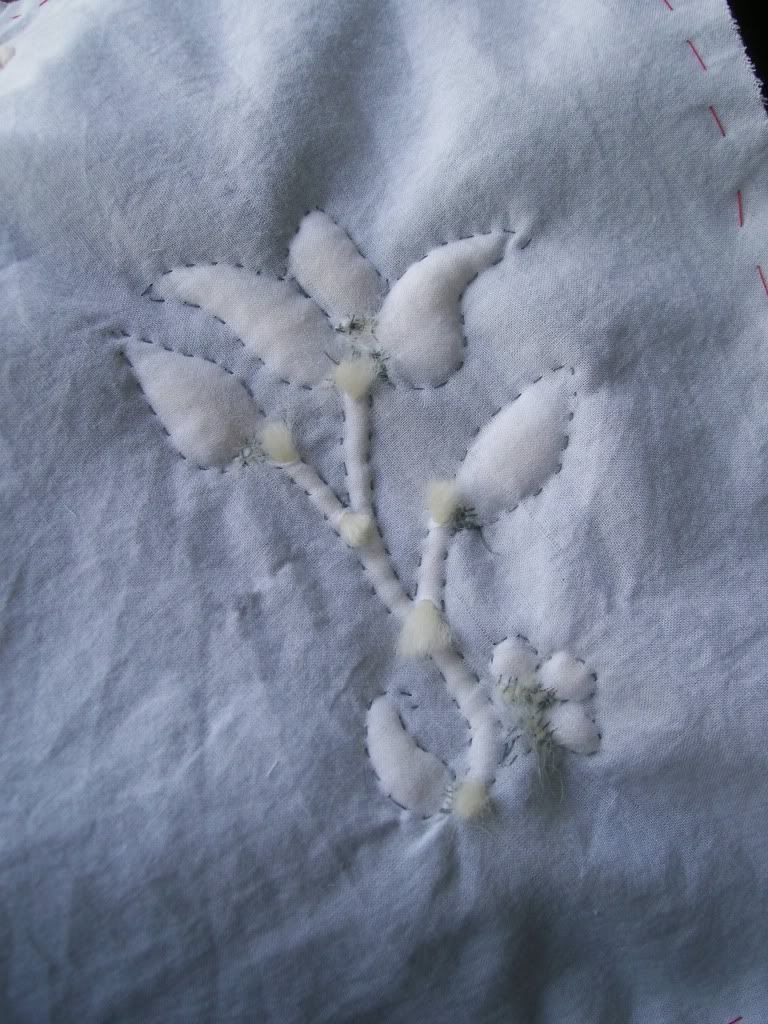
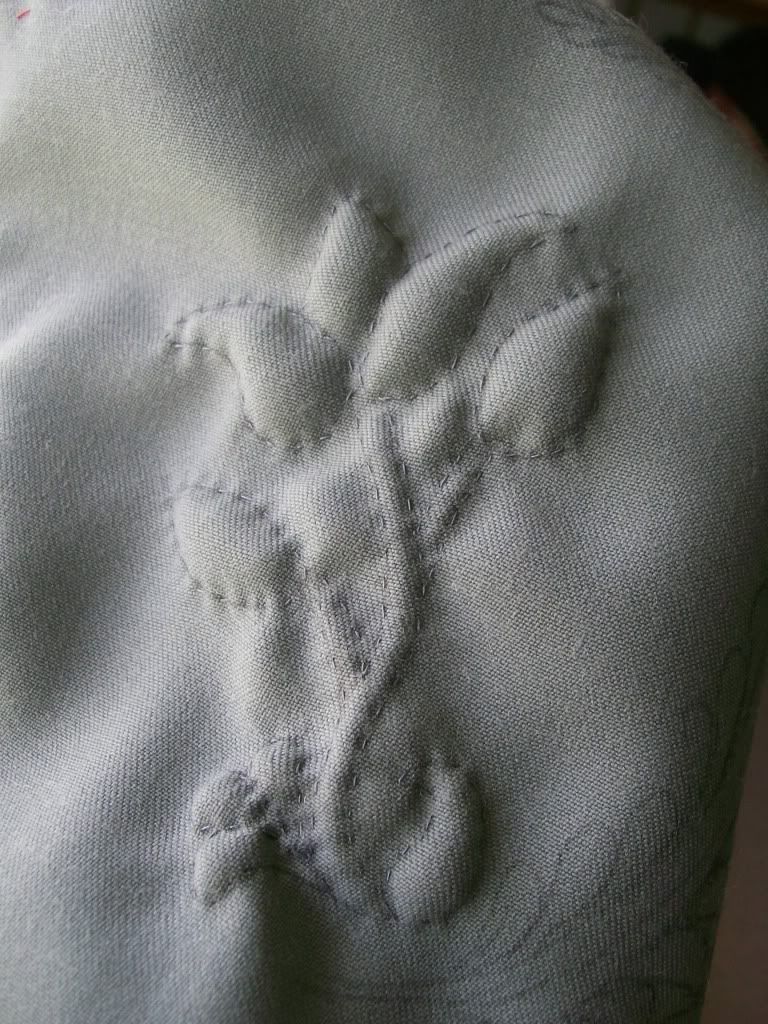

Comments
you will have tons of fun! It's always lovely to dress up and give a demonstration to an audience, who are really interested! It's addictive!
Your tarpunto/cording looks beautiful, that will give a very unique touch to your new garment. I can't wait to see the finished product, too!
ENJOY...and please take like a gazillion of photos;)
Sabine